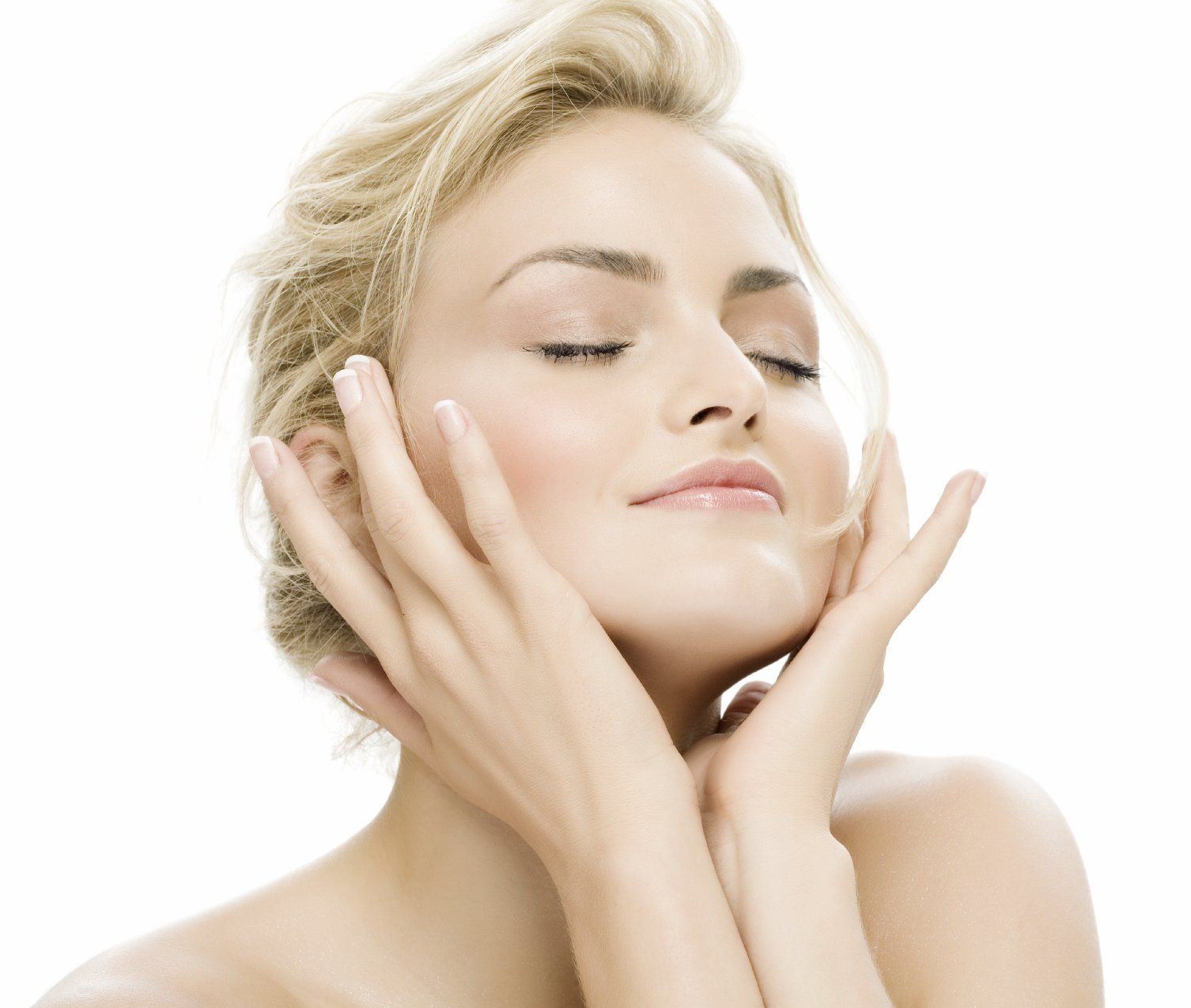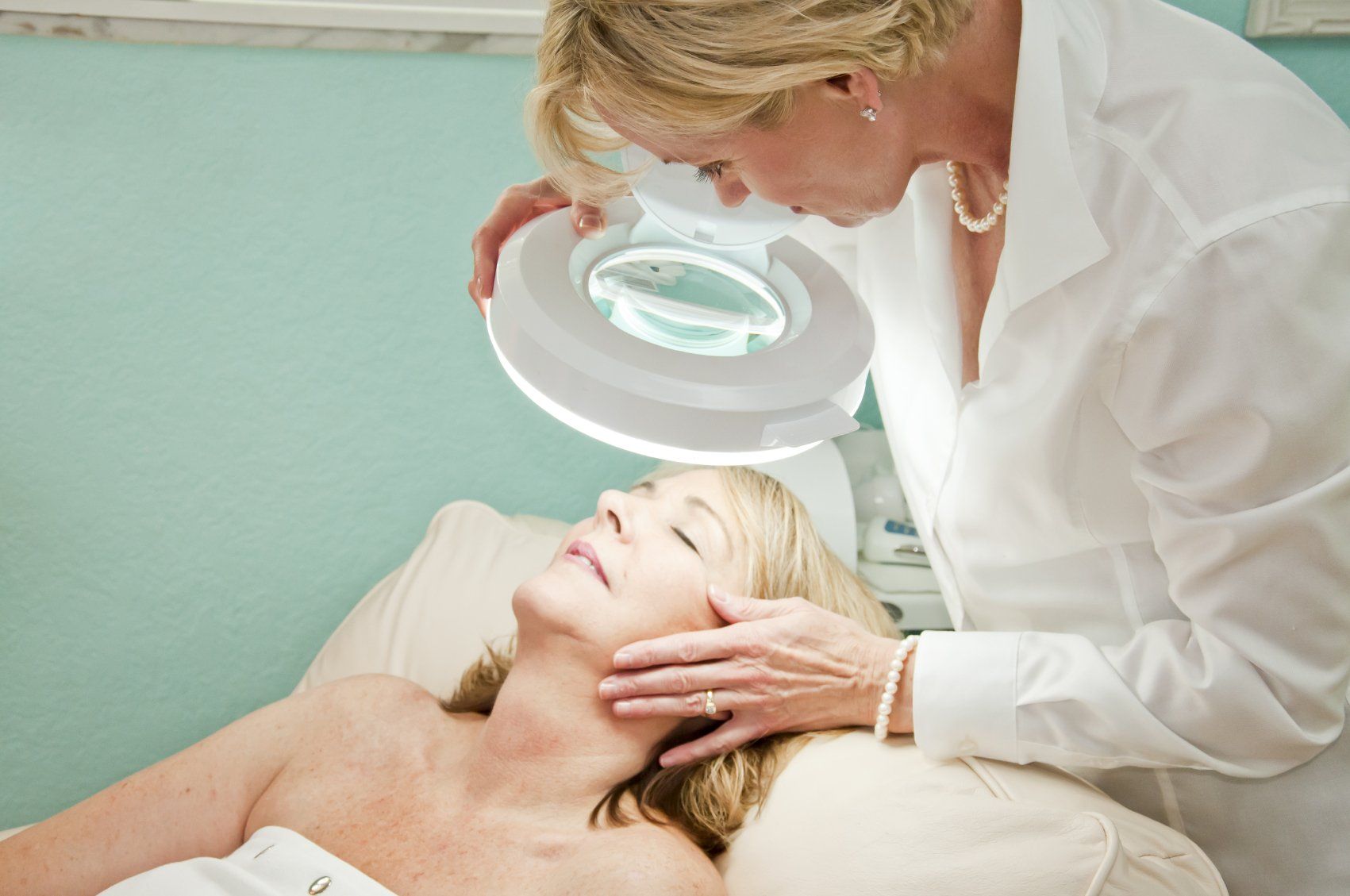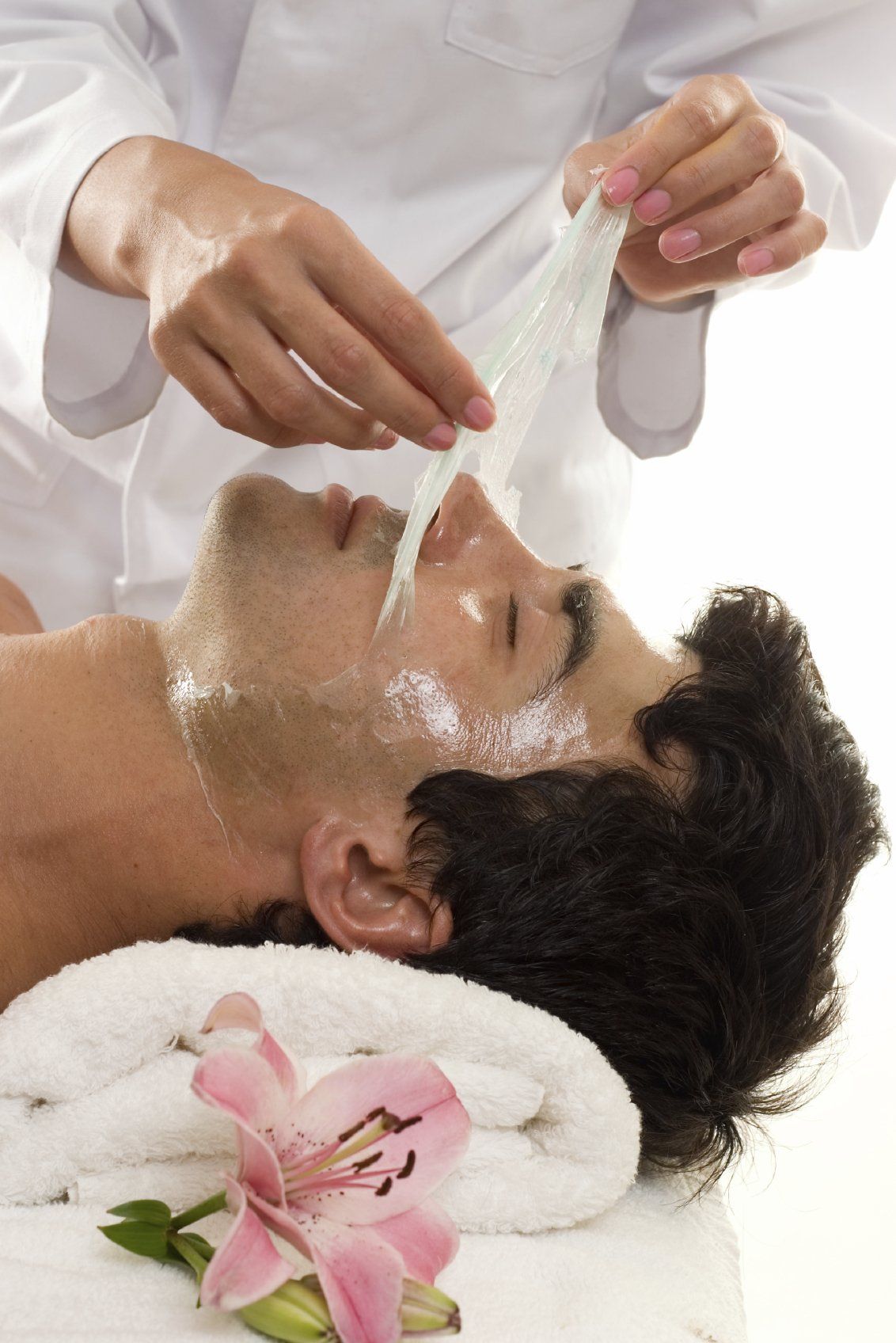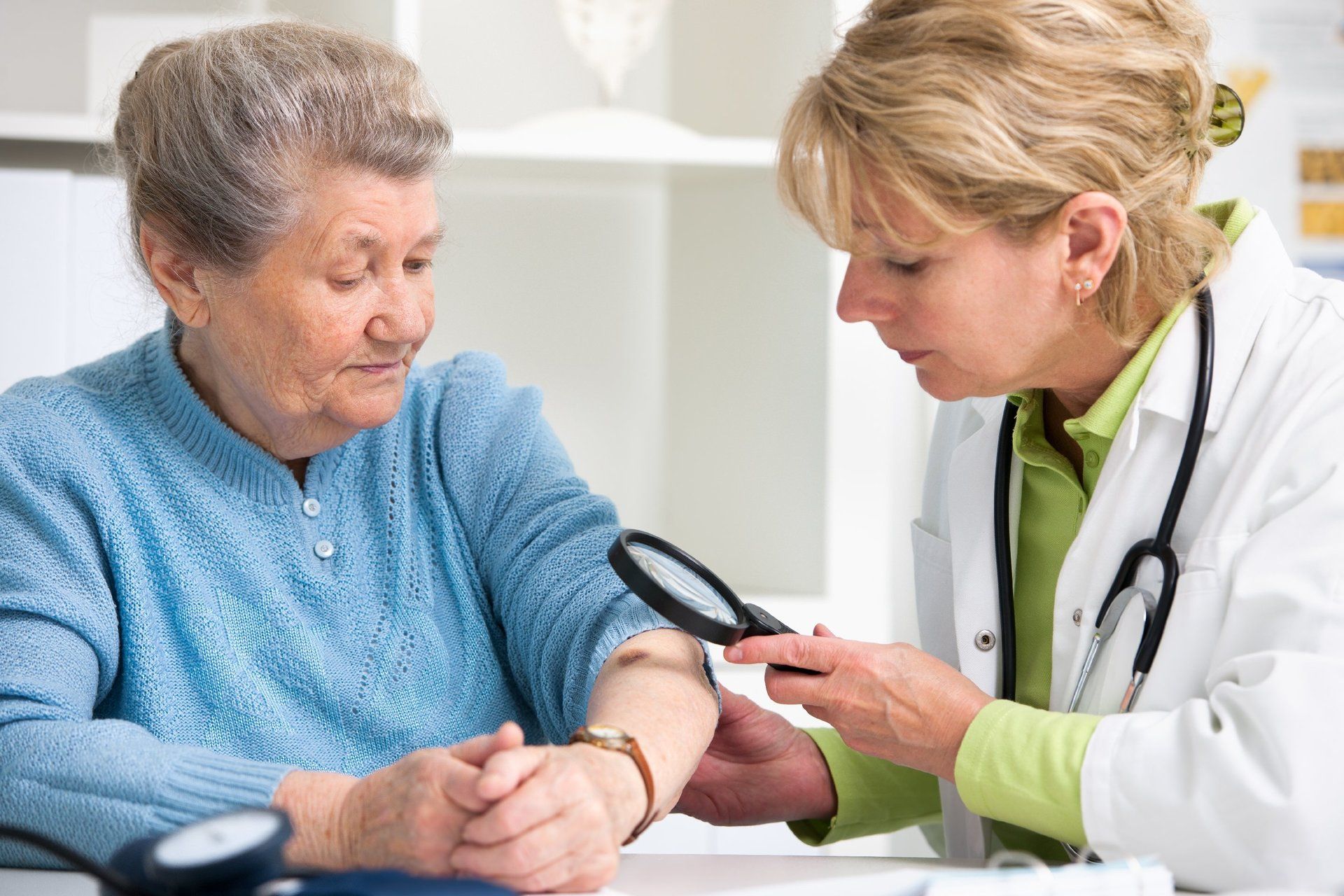Cosmetics and Personal Care Products in the Medicine and Science Collections
- By National Museum of American History
- •
- 09 Sep, 2018
- •
Skin care products have historically accounted for a large percentage of the American cosmetics and hygiene industry, and this is still true today.

More so than for most beauty products, the claims made about skin lotions, powders, creams, bleaches, ointments, and cleansers straddle the line between medicinal and cosmetic. Claims that products will improve or protect skin health have often come with the stated or implied promise that skin will also look better—smoother, cleaner, whiter, clearer, and glowing. Because beautiful skin is equated with health, it is almost impossible to divorce beauty claims from health claims, and beauty products from health products.
The Museum’s collection of skin care products shows how Americans have defined beautiful, healthy skin from the 1800s through the present. Many of these ideals have remained quite consistent. Before the mass-marketing of cosmetic products, women often made their own skin care preparations from recipes passed to them through mothers, friends, or women’s magazines. These recipes promised to remove freckles and ruddiness, to calm rashes, or to reverse damage done by wind and sunburn. Patent (proprietary) medicines and beauty preparations from the latter half of the 1800s made the same claims, while also promising to cure pimples and eczema, and make skin look youthful, soft, and smooth.
In the early twentieth century, a new generation of branded skin care products emerged. These products were usually sold in upscale, brand-dedicated shops, in druggists and department stores, or by licensed agents. Women such as Elizabeth Arden, Helena Rubinstein, and Madam C.J. Walker developed cosmetic companies that offered multi-product “systems” of skin care products.
| Ardena Complexion Clear for Young Moderns |
These product lines promised to cleanse and clarify skin, making it look healthy, youthful, and radiant.
Skin care preparations from the 1900s on have continued to focus on ideals of youthful, clear, supple skin—they claim skin renewal and anti-aging properties, as well as healthful soothing, moisturizing, detoxifying, and anti-acne effects.
One skin care ideal that has changed over time is skin color. American ideals of skin health have always been tied to problematic ideas about race and economic class. White Americans have idealized a pale complexion for most of American history. A pale, creamy complexion and smooth, white hands not only signified that one was racially white, they also demonstrated one’s wealth by implying that a man—but far more importantly a woman—did not perform manual labor or work outside in the sun.
Because nineteenth-century Americans subscribed to an idealized version of “natural” beauty, the use of cosmetics to give the appearance of a white, smooth, clear complexion was looked upon as false and indecent. Women were supposed to “earn” their good complexion through good health practices and moral living. Powders and lotions often advertised themselves as “invisible” in order to satisfy the moral prohibition on artificial beauty.
Despite the social prohibition on cosmetic use, women often secretly sought and used cosmetic skin preparations. Skin color and clarity provided such economic and social advantage that many women were willing to use products that were harmful—these skin products often contained toxic mercury, arsenic, and lead—in an attempt to get closer to the ideal. Though doctors and women’s magazines railed against the dangers inherent to cosmetics, many women likely believed manufacturers’ packaging claims that their cosmetic products were “perfectly safe.”
Both white women and women of color used products to bleach their skin, to lighten or conceal discolored areas, and to soothe and smooth irritated skin and acne. However, few mainstream cosmetic companies marketed to or acknowledged African American consumers, and most common skin care products were not manufactured in colors to suit darker skin. For example, talcum powder, used to protect and soothe skin while also absorbing the shine of perspiration, in its natural state provided a white tint to the skin. It was also available in pinkish or “flesh” (Caucasian skin-toned) tints.
In response, women such as Madame C. J. Walker and Annie Turnbo Malone started successful companies to supply darker skinned women with skin care and beauty products. Notably, neither company originally carried skin bleaching products. In fact, Walker asserted that her products were especially appropriate for the skin and the self-esteem of woman who must do manual labor.
In the late 1920s, acquiring a light summer tan became fashionable. By the 1930s, cosmetics companies began to offer face powders in darker shades that emulated a tan—or even a hint of exotic ethnicity—on white skin. L’Oreal’s Ambre Solaire, one of the first tanning products, was marketed in 1935. Although these early tanning oils promised to protect skin health while promoting a beautiful tan, they actually provided almost no protection from sun damage. The sun tanning fad of the 1920s-1930s did not do away with race or class concerns within the skin care industry. Product advertisements for skin lighteners assured women that they could reclaim their creamy complexions as soon as summer left.
In the 1960s, darker skin tones were more fully embraced, and skin care products changed in response. Both white men and white women sought deeply tanned, “bronze” skin, and tanning products now promised to give a long-lasting and dark tan. As the link between sun-damaged skin and skin cancers emerged, new products were developed to protect the skin. Self tanners, which impart a suntanned appearance to the skin without sun exposure, were introduced in 1959 by Man-Tan.
Sunscreens with SPF (sun protection factor) ratings were introduced in the 1960s. The SPF rating is a way of measuring what percentage of the sun’s damaging UV rays are transmitted to the skin. Although sunscreens with higher SPF ratings are more protective in some ways, they were generally only effective against UVB rays, which cause the burned and peeling skin we associate with sunburn. UVA rays were not understood to be a concern, and were not addressed by the SPF rating. By the 1990s, it was understood that both UVA and UVB rays can cause both cancer and “aging” of the skin, and sunscreens began to be marketed for UVA protection. Sunscreens are now rated as “multi-spectrum” or “broad spectrum,” if they protect against both UVA and UVB rays. People with naturally darker skin color are slightly more protected from UV radiation than those with pale skin. However, because skin cancers are more difficult to spot on darker complexions, physicians strongly advise people of all skin colors to wear sunscreens. Self-tanning sunless preparations and strong sunscreen lotions continue to be popular for both beauty and health reasons.
Bibliography
Gill, Tiffany M. Beauty Shop Politics: African American Women’s Activism in the Beauty Industry. Urbana; Chicago: University of Illinois Press, 2010.
Jones, Geoffrey. Beauty Imagined: A History of the Global Beauty Industry. Oxford; New York: Oxford University Press, 2010.
Jones, Geoffrey. “Blonde and Blue-eyed? Globalizing Beauty, c.1945–c.19801.” The Economic History Review 61, no. 1 (February 1, 2008): 125–54. doi:10.1111/j.1468-0289.2007.00388.x.
Peiss, Kathy Lee. Hope in a Jar: The Making of America’s Beauty Culture. New York: Metropolitan Books, 1998.
Scranton, Philip. Beauty and Business: Commerce, Gender, and Culture in Modern America. New York: Routledge, 2001.
Segrave, Kerry. Suntanning in Twentieth Century America. Jefferson, N.C.: McFarland & Co., 2005.


- Myth #1: All Sun Must be Shunned
Getting safe sun exposure every day is actually one of the best actions you can take for your health, as this is how your body produces enough essential vitamin D, which is known to protect against cancer (including melanoma) and support your immune system, cardiovascular system, kidney function, bones and teeth, muscle strength and much more.
While excessive sun exposure, such as getting sunburned, can certainly damage your skin, sensible sun exposure is not only quite healthy, it's a fundamental step in reaching optimal health.
The skin around your eyes and your face is typically much thinner than other areas on your body and is a relatively small surface area so will not contribute much to vitamin D production. So it is strongly recommended that you protect this fragile area of your body, as it is at a much higher risk for cosmetic photo damage and premature wrinkling. You can use a safe sunblock in this area or wear a cap that always keeps your eyes in the shade.
- Myth #2: Tanning Must be Avoided
Assuming you use sensible exposure and avoid getting burned, sensible tanning the "old-fashioned" way (i.e. out in the sun) is perfectly acceptable. The first few days, you should limit your exposure to the sun to allow your body's melanocyte cells to rev up the ability to produce protective pigmentation that not only gives you a tan, but also serves to help protect you against overexposure to the sun.
If you are a fairly light-skinned individual that tends to burn, you will want to limit your initial exposure to a few minutes, especially if it is in the middle of summer.
The more tanned your skin will get, and/or the more tanned you want to become, the longer you can stay in the sun. If it is early or late in the season and/or you are a dark-skinned individual, you could likely safely have 30 minutes on your initial exposure. If you are deeply pigmented and your immediate ancestors are from Africa, India or the Middle East, it is possible you may not even have to worry about how long you are exposed.
Always err on the side of caution however, and let it be your primary goal to never get sun burned, while also protecting the sensitive skin around your eyes and face, as noted above.
- Myth #3: Sunless Tanning Lotions/Sprays are Safe
Sunless tanners contain a lengthy list of chemical agents — up to 45 in the case of spray tanners. Many of these agents have never been studied for their long-term effects on human health, because the U.S. Food and Drug Administration does not systematically review the safety of personal care products.
One of the main ingredients in spray tanning solutions is dihydroxyacetone, a color additive that darkens your skin by reacting with amino acids in your skin's surface layer. Dihydroxyacetone is often abbreviated DHA (which should not be confused with docosahexaenoic acid, the healthy omega-3 fat often given the same abbreviation).
Manufacturers of sunless tanning products claim DHA is a simple carbohydrate sugar solution, but some toxicologists disagree. Part of the problem is that the U.S. government's regulations for DHA allow contaminants such as lead, arsenic and mercury. Further, a report by the National Toxicology Program 1 suggests the risks of DHA remain unclear, pointing to some evidence that DHA may be a mutagen that could induce breaks in DNA strands, which could contribute to accelerated aging and even skin cancer.
- Myth #4: The Higher the SPF of Your Sunscreen, The Better
It's generally unnecessary to purchase sunscreen with a sun protection factor (SPF) greater than 50. The reason for this is because while SPF works by absorbing, reflecting or scattering the sun's rays on your skin, its protective ability is not linear and does not offer a great deal more protection at higher levels.
With regards to SPF, another important factor to remember is that SPF only protects against UVB rays, which are the rays within the ultraviolet spectrum that allows your body to produce vitamin D in your skin. But the most dangerous rays, in terms of causing skin damage and cancer are the UVA rays. This is why you always want to make sure any sunscreen you buy protects against UVA's as well as UVB's … and does NOT contain any common toxic ingredients , such as oxybenzone or retinyl palmitate.
Myth #5: All Skin Care Products on the Market are Safe
It is important to understand that of the 10,500 ingredients used in your personal care products, fewer than 20 percent have been reviewed for safety in the last 30 years, according to an Environmental Working Group (EWG) analysis. 2
The reviews that have been done were conducted by a fox in the henhouse—the Cosmetics Ingredients Review, which is run by the cosmetics industry! Not all ingredients need even be mentioned on the label—if they don't want to include one for some reason, they can just leave it off. Therefore, most personal care product formulations are based on nothing more than marketing success, designed to smell good, look good and feel good when you rub them on your skin, regardless of their impact on your health.
But in reality, as the CNN video above describes, many skin care products on the market contain chemicals (including parabens, phthalates, triclosan and others) that have been linked to cancer, hormone disruption, reproductive toxicity and other health problems.
One of the core principles to remember when it comes to skin care is that whatever you slather onto your skin will be absorbed into your body and enter your bloodstream. This is why it's so important to avoid skin care products containing questionable chemicals! Your skin is an excellent drug delivery system, so you should be just as careful with what you put on your skin as you are with what you eat, if not more so, as your gut actually helps protect you against some of the toxins you ingest by filtering them out ... a protection you don't get when a chemical is absorbed through your skin.



Ever wonder how women in ancient times or in the Renaissance used to make themselves beautiful?
Well, let’s just say they didn’t have the skincare wonders we have now – med spa procedures, Botox , and countless anti-aging creams and serums.
Curious to learn more about the history of skin care? Then travel back through time with us as we discuss how women in ancient cultures up to modern day cared for their skin.
HOW DID PEOPLE LOOK HOT CENTURIES AGO?
Ancient Egypt
Did you know that the first archaeological evidence of cosmetics is from Ancient Egypt roughly 6,000 years ago? But cosmetics weren’t just for aesthetics – they also protected the Ancient Egyptians from the elements, like the sun and insects. Makeup was also used to honor gods and goddesses. In terms of skincare, the Ancient Egyptians used castor, sesame, and moringa oils to fight wrinkles and preserve their youth. Ancient Egyptians also made a soap paste out of clay and olive oil to cleanse their skin. What is more, Egyptian women incorporated honey and milk masks into their beauty regimes to moisturize their skin, and they also took milk baths and used dead sea salts to exfoliate, rejuvenate, and heal their skin.
Ancient Greeks
In Ancient Greece, precious oils, perfumes, cosmetic powders, eye shadows, skin glosses, paints, beauty unguents, and hair dyes were in universal use. Ancient Greeks made their own skincare products using local, natural ingredients. One of the most widely used skincare treatments was mixing fresh berries with milk, and then applying the paste on the facial area. The Ancient Greeks also used olives and olive oil as exfoliants and moisturizers. Lastly, honey along with milk and yogurt were used as anti-aging preparations.
Medieval Times
During the 12th century, cosmetics were regularly used in medieval Europe. Ointments consisted of animal fats. Smooth, white skin was highly regarded, and many women used herbal remedies to promote fair skin and diminish pimples. Aloe vera, rosemary, and cucumbers were used to cleanse the skin. Seeds, leaves, and flowers were also mixed with honey to create face masks, and vinegar was used as an astringent.
Renaissance
Women in the Renaissance period used silver mercury, lead, and chalk to color their faces. Most of the skin care practices were the same as the medieval period, and women primarily relied on herbs and honey to cleanse and rejuvenate their skin. Some other skin care remedies included using broom stalks to cleanse the skin and oatmeal boiled in vinegar to treat pimples. Bread soaked in rose water was also used to soothe puffy eyes.
The Baroque Era
During the Baroque Era, women believed in saunas and sweat cleansing. Milk baths were also used for smoother, clearer skin. Make up during this time was intended to look like paint, and heavy makeup was considered more respectable. Rouge was very popular, and in the 1780s, French women used two million pots of rogue per year. Women’s lips were reddened with distilled alcohol or vinegar.
1800s
Exercise, cleanliness, and skincare were all held in high regard during the 1800s. Zinc oxide was used to lighten skin, but often caused allergic reactions. Hygiene products became less expensive and more accessible. Harsh cleansers were often used as were egg yolks, honey and oatmeal to often the skin and help diminish blemishes. Lemon juice was also used to naturally bleach the skin a few shades lighter. During this time, too, Chapstick, Vaseline, and baby powder were invented, all of which were used in skincare regimes.
1900s
The 1900s was an explosion in terms of accessible skincare for women. Carmex was invented in 1937, and sunscreen in 1944. In 1946, Estee Lauder launched their cosmetics line in NYC, and then in the 1950s Clearasil, Ponds, Oil of Olay, and Clinique were all launched, too. The 1980s saw a rise in all natural skincare products. Dr. Howard Murad’s line was launched in 1989, and Burt’s Bees in the 1980s, too. In 2002, the FDA approved Botox for frown lines on the face. In 2007, The Zeno, a hand-held, battery-operated device, transfers heat onto a blemish, killing the bacteria and making them disappear after only a few treatments.
Reference:
https://www.laseraway.com/news/brief-history-skincare-ages/

Studies have shownthat eating foods with these deeply colored pigments can make your face actually look healthier than being tanned. [1]
The more red and yellow tones found in your skin, the more attractive the people were found to be. The redder tones are caused when people are flushed with blood, particularly if the blood has lots of oxygen in it. Researchers found that, given the choice between skin color caused by suntan and skin color caused by carotenoids, people preferred the carotenoid skin color, so if you want a healthier and more attractive skin color, you are better off eating a healthy diet.
In order to have clear, healthy skin, you need to make sure your body is relatively free of toxins, so cleansing your body of dangerous substances while putting in the finest nutrients is essential. The organs responsible for providing you with beautiful skin include your liver, kidneys, adrenals, thyroid, and your large and small intestines.
- Your liver and kidneys are the two organs that filter out impurities on an ongoing basis. If your diet is less than ideal, these two organs can easily become overtaxed, which can lead to breakouts and other skin problems.
- Your adrenals make many essential hormones, such as pregnenolone, DHEA, estrogen, progesterone and testosterone. Hormonal imbalances can also result in problematic skin conditions, so adrenal function is important as well.
- A well-nourished, energetic thyroid also provides hormones and works closely with your adrenals to create energy. Dry, flakey, sluggish skin can be evidence of a weak thyroid.
- Your small- and large intestines provide nutrients to all your organs and remove waste products from your body. When waste meant for elimination remains in your intestines your skin becomes thick, oily and blemished. Pure, flawless skin is typically a reflection of clean intestines.
Eating a healthy diet as described in my nutrition plan , which focuses on whole, bioavailable organic foods, is your number one strategy for helping your body detox naturally while supplying the necessary nutrients your skin needs to thrive. That said, some foods are particularly effective at promoting beautiful, clear skin, including:
- Animal-based omega-3 fats: Omega-3 fats help to normalize skin lipids and prevent dehydration in the cells. This keeps skin cells strong and full of moisture, which can help to decrease the appearance of fine lines. Fatty acid deficiency can manifest in a variety of ways, but skin problems such as eczema, thick patches of skin, and cracked heels are common. Plus, omega-3 fats may have an anti-inflammatory effect that can help to calm irritated skin, giving you a clear, smooth complexion.
- Vegetables: Ideally fresh, organic and locally grown.
- Fermented foods are even better as they can start with the same vegetables but are converted by bacteria to superfoods, which help promote the growth of friendly intestinal bacteria and aid in digestion.
- Avoid Sugars, Fructose and Grains: This is probably the single most important step you can take to improve your skin health. If you eliminate all sugars, fructose and grains from your diet for a few weeks there is a major likelihood you will notice rapid improvement in your complexion.
Reference:
[1] Evolution and Human Behavior Volume 32, Issue 3, May 2011, Pages 216–227




